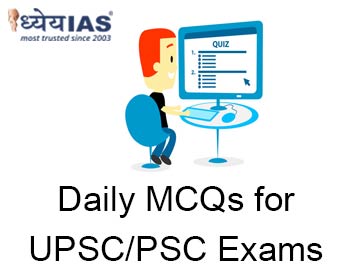Home > Daily-mcqs
Daily-mcqs 14 May 2025

Q1:
Which of the following statements reflect the strategic significance of the France-Poland Mutual Defense Treaty for European security? How many of the above statements are correct?
A: Only one
B: Only two
C: Only three
D: All four
Answer: C
Explanation:
Statements 2 and 3 are directly supported by the treaty’s provisions—it enhances deterrence, especially for Poland, and aligns with NATO while reinforcing EU capabilities. Statement 1 is incorrect as President Macron clarified the treaty complements, not replaces, NATO or EU security structures. Statement 4 is misleading—the treaty reinforces bilateralism within a multilateral framework, not a shift away from multilateralism.
Q2:
Consider the following statements regarding the Rice Pangenome: How many of the above statements are correct?
A: Only one
B: Only two
C: Only three
D: All four
Answer: B
Explanation:
Statements 1 and 3 are true: the rice pangenome incorporates genetic variation across rice types and adds new sequences. Statement 2 is false because it includes both wild and cultivated varieties. Statement 4 is also incorrect; the pangenome was developed by researchers from the Chinese Academy of Sciences, not ICAR.
Q3:
Which of the following trends are evident from the SRS 2021 report? How many of the above statements are correct?
A: Only one
B: Only two
C: Only three
D: All four
Answer: C
Explanation:
Statement 1 is correct — India’s TFR is 2.0, below the replacement level of 2.1.
Statement 2 is correct — Bihar has one of the lowest elderly shares at 6.9%.
Statement 3 is incorrect — Kerala leads in elderly share, not working-age.
Statement 4 is correct — Tamil Nadu and Punjab have TFRs of 1.5, below replacement.
Hence, only statements 1, 2, and 4 are correct.
Q4:
Consider the following statements regarding the recent discovery of new crocodile species off the Yucatán Peninsula: How many of the above statements are correct?
A: Only one
B: Only two
C: Only three
D: All four
Answer: B
Explanation:
Statements 2 and 3 are correct. The total number of New World crocodile species now stands at six, and both new species have been discovered on Cozumel Island and Banco Chinchorro. Statement 1 is incorrect; they were mistaken for American crocodiles, not Morelet’s. Statement 4 is incorrect because the species are yet to be named.
Q5:
Which of the following best describes the concept of a “Circular Economy”?
A: Producing goods in a closed industrial zone
B: Using goods once and discarding them safely
C: A system aimed at extending product lifespan and resource recovery
D: Reducing the use of electronics to minimise waste
Answer: C
Explanation:
A circular economy is a resource-efficient system that shifts from the linear model of "take-make-dispose" to one that emphasises reuse, repair, remanufacture, and recycling. It aims to maximise product life and reduce dependency on virgin materials. This model helps address environmental challenges while promoting sustainable economic development, especially crucial for resource-constrained nations like India. Hence, option (c) best defines the circular economy.